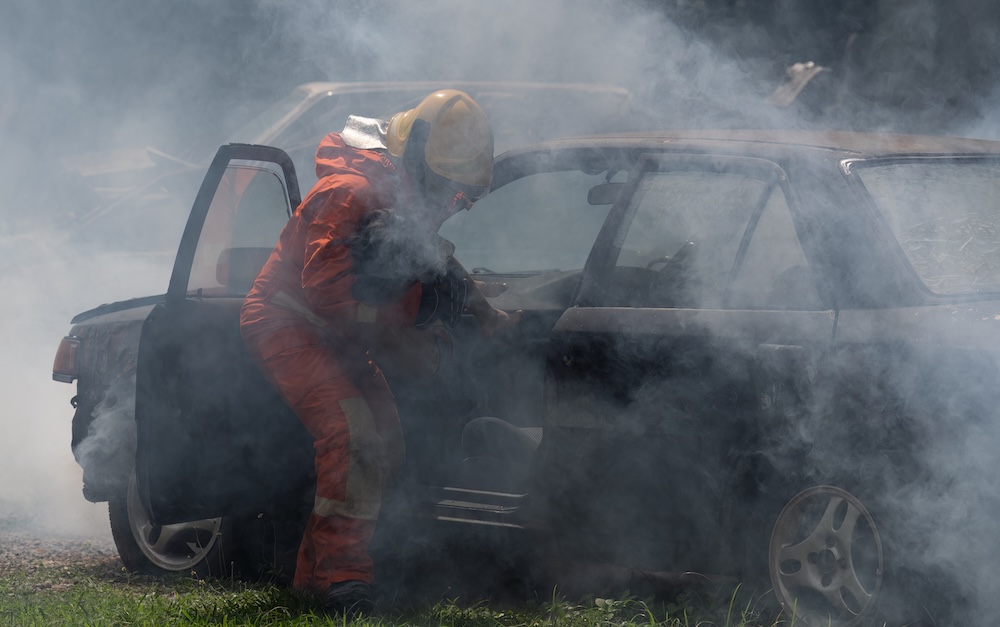What Is Air Pollution?
Air pollution is the presence of harmful or excessive substances in the air we breathe. These pollutants—whether gases, chemicals, or particulates—can harm human health, damage ecosystems, and contribute to climate change. Air pollution can be both visible (like smog) and invisible (like ozone or carbon monoxide), and it affects every corner of the planet, from urban centers to remote rural areas.
Types of Air Pollutants
There are many different types of air pollutants, but they are often grouped into two categories: primary and secondary.
Primary Pollutants
These are emitted directly into the atmosphere from a source:
- Carbon monoxide (CO) – From vehicle exhaust, wildfires, and industrial processes
- Nitrogen oxides (NOx) – From car engines, power plants, and fertilizers
- Sulfur dioxide (SO₂) – From burning fossil fuels like coal and oil
- Particulate matter (PM10 and PM2.5) – From construction, dust, and combustion
- Volatile organic compounds (VOCs) – From paints, cleaning agents, and fuels
Secondary Pollutants
These form in the atmosphere when primary pollutants react with each other or with natural components like sunlight:
- Ozone (O₃) – Forms when NOx and VOCs react in sunlight; a major component of smog
- Smog – A mixture of pollutants, often worsened by weather patterns and temperature inversions
Major Sources of Air Pollution
Air pollution arises from both natural and human-made sources. While natural events like wildfires and volcanic eruptions contribute, the largest impact comes from human activity.
Human-Caused Sources:
- Transportation – Cars, trucks, ships, airplanes
- Industry – Manufacturing, oil refining, power generation
- Agriculture – Fertilizers, animal waste, and methane emissions
- Household activities – Burning wood, using certain cleaning agents or paints
Natural Sources:
- Wildfires
- Volcanic activity
- Dust storms
- Pollen and spores
Health Effects of Air Pollution
Air pollution has serious and sometimes fatal effects on human health. According to the World Health Organization, 99% of the global population breathes air that exceeds safe levels.
Short-Term Effects:
- Coughing and throat irritation
- Shortness of breath
- Eye irritation
- Headaches or dizziness
Long-Term Effects:
- Asthma and chronic bronchitis
- Cardiovascular disease
- Lung cancer
- Neurological and developmental issues
- Premature death
Vulnerable populations like children, the elderly, and those with pre-existing conditions are at higher risk.
Environmental Consequences
Air pollution doesn’t just affect humans—it harms the entire environment.
- Acid rain: Formed from sulfur and nitrogen emissions, damaging forests, lakes, and buildings
- Crop damage: Ozone pollution can reduce agricultural productivity
- Wildlife impact: Toxic air affects birds, insects, and other animals
- Climate change: Pollutants like black carbon and methane contribute to global warming
Global Air Quality Trends
Many cities around the world now monitor their Air Quality Index (AQI), which tracks levels of major pollutants. An AQI over 100 is considered unhealthy for sensitive groups, and values over 300 are considered hazardous for all.
Some of the most polluted cities include:
- Delhi, India
- Lahore, Pakistan
- Dhaka, Bangladesh
- Ulaanbaatar, Mongolia
- Jakarta, Indonesia
However, developed countries are also affected. In the U.S., wildfire smoke and ozone pollution have led to increasing AQI alerts in many regions.
Indoor Air Pollution
Not all pollution comes from outside. Indoor air pollution is a major health concern, particularly in homes with poor ventilation.
Common Indoor Pollutants:
- Tobacco smoke
- VOCs from paint or furniture
- Mold and mildew
- Gas stoves or wood-burning fireplaces
- Cleaning supplies and synthetic air fresheners
Improving ventilation, using HEPA filters, and choosing non-toxic household products can help.
Ways to Reduce Air Pollution
For Individuals:
- Use public transportation, cycle, or walk
- Limit idling and unnecessary driving
- Choose energy-efficient appliances
- Avoid aerosol sprays and choose low-VOC products
- Use air purifiers and improve indoor ventilation
For Communities:
- Support urban greenery and tree planting
- Transition to clean energy sources
- Implement anti-idling and low-emission zones
- Advocate for clean air policies
For Businesses and Governments:
- Enforce emission regulations
- Provide subsidies for renewable energy
- Transition fleets to electric vehicles
- Invest in air quality monitoring and research
Common Questions About Air Pollution
What is the most harmful air pollutant?
Fine particulate matter (PM2.5) is considered one of the most dangerous because it penetrates deep into the lungs and bloodstream.
Can you get sick from bad air quality?
Yes. Even short-term exposure to polluted air can cause coughing, wheezing, fatigue, and worsening of chronic diseases.
Can air pollution affect mental health?
Emerging research links air pollution to increased risk of anxiety, depression, and even cognitive decline.
Is ozone good or bad?
Ozone is beneficial in the upper atmosphere (blocking UV radiation) but harmful at ground level where it contributes to smog.
How do I check the air quality near me?
You can use apps or websites like AirNow.gov or IQAir.com for real-time local AQI reports.
Final Thoughts
Air pollution is a silent, invisible threat that affects our health, communities, and planet every day. But it’s also something we can influence. By understanding the sources and consequences of air pollution—and taking steps to reduce our impact—we can protect our lungs, our ecosystems, and the future. Cleaner air is a shared responsibility, and even small changes can lead to clearer skies ahead.









Reader Interactions